How to use a novel glass fiber post system for tricky restorations
Atypical root canal anatomy can make for difficult restorations, but new materials can help.
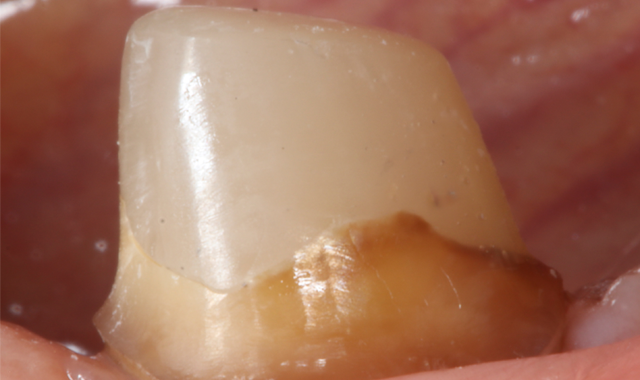
An endodontically-treated molar with extensive crown destruction is a quite common clinical condition that demands restoration.
Depending on the situation, an endocrown or a post and core along with full-coronal restoration can be used to restore the tooth. The endocrown can be fabricated when the pulp chamber still remains,1 as it provides retention for the crown by itself.
On the other hand, the absence of the pulp chamber walls forces the use of an intraradicular retention to anchor the restoration. Besides the use of a cast metal post that demands more than one appointment to be concluded, the use of composite resin associated with a pre-fabricated fiber post is probably the most common alternative chosen by the dentist to solve this problem.
Fiber posts are made from a pack of pre-stretched fibers positioned in the longitudinal direction and impregnated within a resin matrix.2 Glass fibers are widely used in its manufacture.3 To adapt it into the canal, a drill with the same shape and diameter of the post should be used, but this adaptation is not so perfect when the tooth presents atypical endodontic canal morphology.
In this clinical report, we present a case where an innovative post composed of a bundle of thin glass fiber reinforced resin posts (Rebilda Post GT, VOCO) was used to build up a post and core.
Case study
A 70-year-old female patient came to our clinic to restore a root endodontically treated just a few hours before. In the clinical examination, we observed a severely damaged left mandibular first molar.
Fig. 1
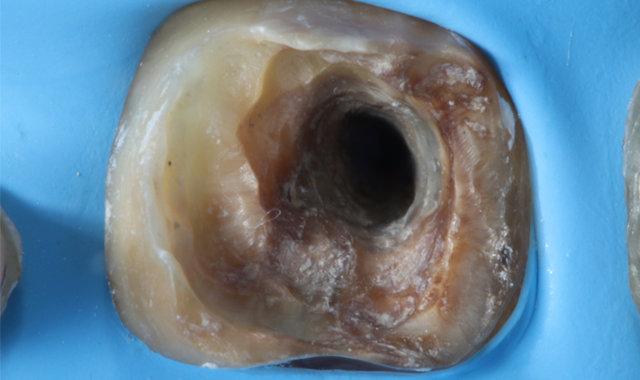
As the remaining pulp chamber walls were impaired, we decided to build up a core anchored by a glass fiber post intraradicularly placed and subsequently fabricate a full-coronal restoration to be cemented over it.
The root presented just one canal with a wide orifice (Fig. 1). Rebilda Post GT System, together with Rebilda Form (VOCO), was chosen to build up the core. Rebilda Post GT is a glass fiber-reinforced resin post indicated for treating teeth with atypical root canal anatomies, such as taper shaped like in this case. Unlike the regular glass fiber post, it is in fact a set of fine and flexible individual posts measuring 0.3 mm in diameter that can be placed without any further root canal preparation using drills.
After tooth isolation with a rubber dam, we selected the measure of the post to be used (Fig. 2). Depending on the diameter, there is a variation on the number of individual thin posts. For this case, we chose the 1.2-mm post, composed of nine thin individual posts. On its surface, we applied one coat of silane Ceramic Bond (VOCO) for one minute (Fig. 3) and air dried.
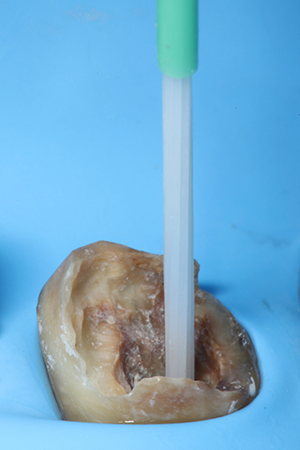

Fig. 2 Fig. 3
With the Endo Tim brush (VOCO), we applied the dual-cured, universal adhesive Futurabond U (VOCO) in self-etch mode to the inside of the root canal, lightly rubbing it against the walls for 20 seconds (Fig. 4). A regular brush was used to apply the same adhesive outside the canal for the same amount of time (Fig. 5).
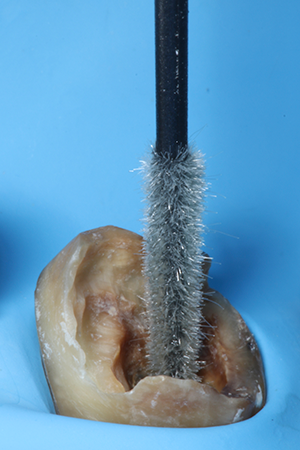
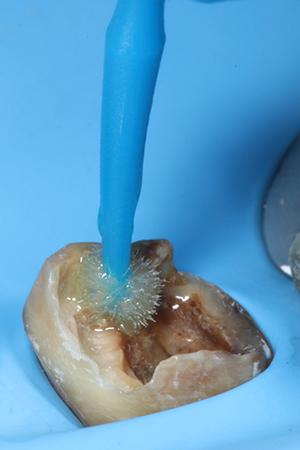
Fig. 4 Fig. 5
We gently air dried the whole tooth and removed any excess adhesive in the canal with an endodontic paper point.
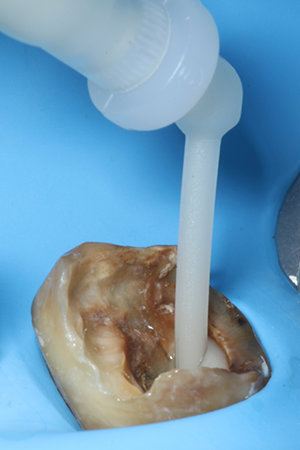
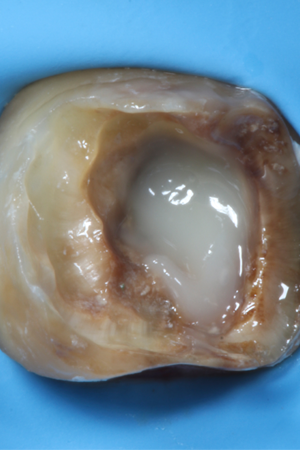
Fig. 6 Fig. 7
For the post cementation, we used Rebilda DC (VOCO), a dual-cured core build-up composite that also works as a cement. With an endodontic tip, it was injected inside the root canal until it started to over flow (Figs. 6-7).
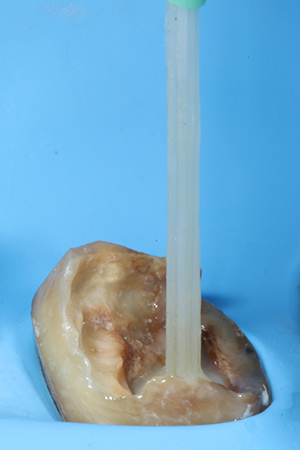
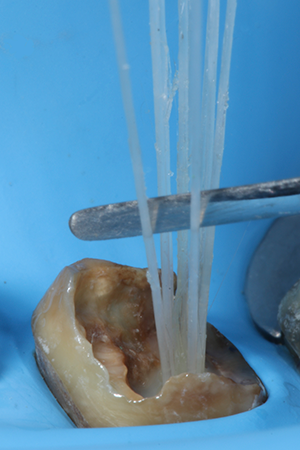
Fig. 8 Fig. 9
After that, we applied a small quantity of Rebilda DC on and between the thin posts of Rebilda Post GT with the same tip. Then, the collective post was inserted (Fig. 8). The sleeve that holds the bundle was carefully removed and a metal spatula was used to separate and spread the thin posts, leaving them equidistant (Fig. 9).
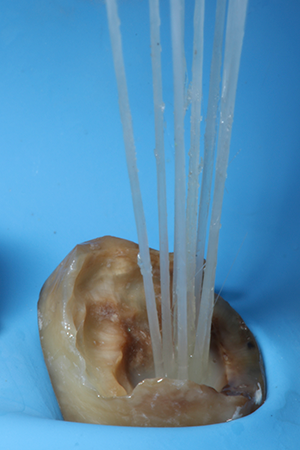
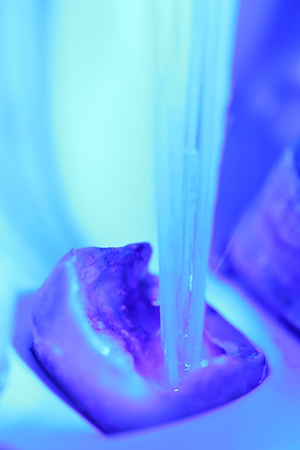
Fig. 10 Fig. 11
Then, we light-cured it for 60 seconds (Fig. 10) and observed the thin posts’ distribution (Fig. 11). In order to facilitate the core filling, we incorporated Rebilda Form with the Rebilda Post GT System. Rebilda Form is a plastic matrix that limits the space where the core build-up material will be inserted, avoiding waste and providing a preliminary core shape.
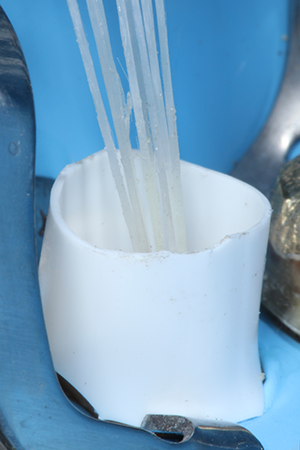
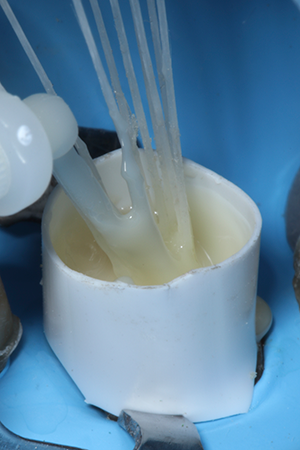
Fig. 12 Fig. 13
After adapting it on the root (Fig. 12), we inserted Rebilda DC again with a new tip, trying to fill the existing spaces between the thin posts and surround it (Fig. 13). We then light-cured it for 60 seconds from each side (Fig. 14).
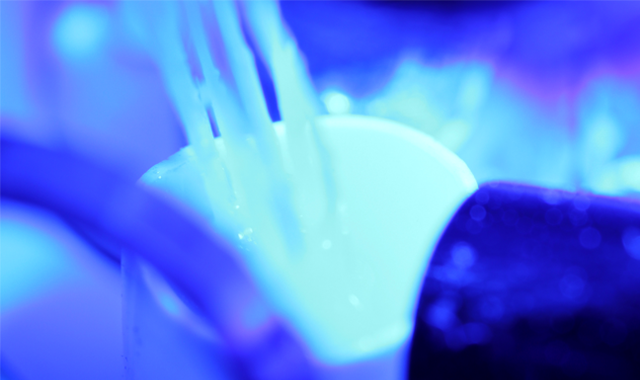
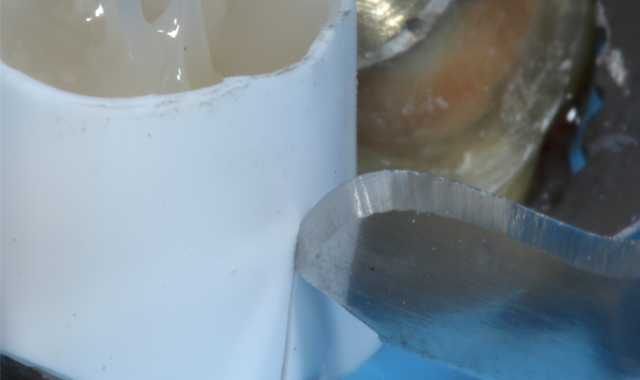
Fig. 14 Fig. 15
A surgical blade number 15C was used to cut the Rebilda Form (Fig. 15). After removing the plastic form, we could see the distribution of the thin posts inside the core (Fig. 16). A diamond bur was used to cut the posts and shaping of the preparation was started with a cylindrical diamond bur while still under rubber dam isolation (Fig. 17).

Fig. 16
We removed the rubber dam, checked the gingival level and polished the surface with a rubber point (Fig. 18).
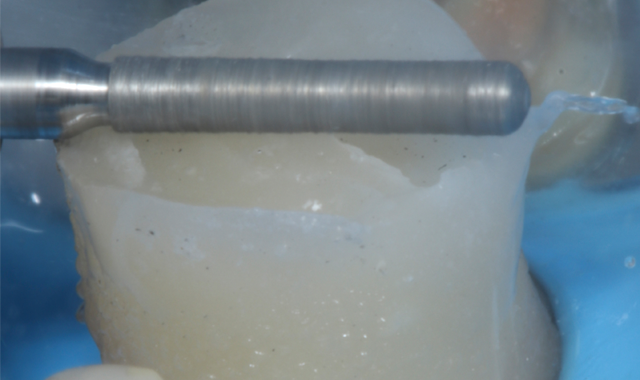

Fig. 17 Fig. 18
Discussion
A severely destroyed posterior tooth is commonly restored with full-coronal restoration associated with post and core. Cast metal posts present a modulus of elasticity much greater than the dentin and are unfavorable because the stress generated during the masticatory function can cause decementation or even tooth fracture.2 Conversely, fiber posts have mechanical properties similar to dentin, favoring its more biomimetic behavior.4,5
A drawback to a regular fiber post is its inability to offer a good solution in itself when faced with atypical teeth that present curved root canals with a pronounced conicity or with an oval cross-section. Therefore, Rebilda Post GT can be an excellent solution for the clinician to create an anchorage for the coronal restoration still using materials with tooth-like mechanical properties.
We speculate that the distribution of the thin posts provided homogeneous reinforcement of the entire core buildup.
Conclusion
The use of a comprehensive post system is an easy way for clinicians to quickly build up a post and core. This is a very interesting clinical approach since it prevents the unnecessary exposition of the root canal to contaminants and leaves the tooth ready to be immediately prepared just after finishing the build-up procedure. Rebilda Post GT is a great alternative to cast metal posts when we have atypical endodontic canal morphology.
References
1. Biacchi GR, Mello B, Basting RT. The endocrown: an alternative approach for restoring extensively damaged molars. J Esthet Restor Dent. 2013 Dec;25(6):383-90. doi: 10.1111/jerd.12065. Epub 2013 Oct 21.
2. Lamichhane A, Xu C, Zhang F. Dental fiber-post resin base material: a review. The Journal of Advanced Prosthodontics. 2014;6(1):60-65. doi:10.4047/jap.2014.6.1.60.
3. Marchionatti AME, Wandscher VF, Rippe MP, Kaizer OB, Valandro LF. Clinical performance and failure modes of pulpless teeth restored with posts: a systematic review. Braz Oral Res. 2017 Jul 3;31:e64. doi: 10.1590/1807-3107BOR-2017.vol31.0064.
4. Dietschi D, Duc O, Krejci I, Sadan A. Biomechanical considerations for the restoration of endodontically treated teeth: a systematic review of the literature, Part II (Evaluation of fatigue behavior, interfaces, and in vivo studies). Quintessence Int. 2008 Feb;39(2):117-29.
5. Watanabe MU, Anchieta RB, Rocha EP, Kina S, Almeida EO, Freitas AC Jr, Basting RT. Influence of crown ferrule heights and dowel material selection on the mechanical behavior of root-filled teeth: a finite element analysis. J Prosthodont. 2012 Jun;21(4):304-11. doi: 10.1111/j.1532-849X.2011.00832.x. Epub 2012 Feb 28.